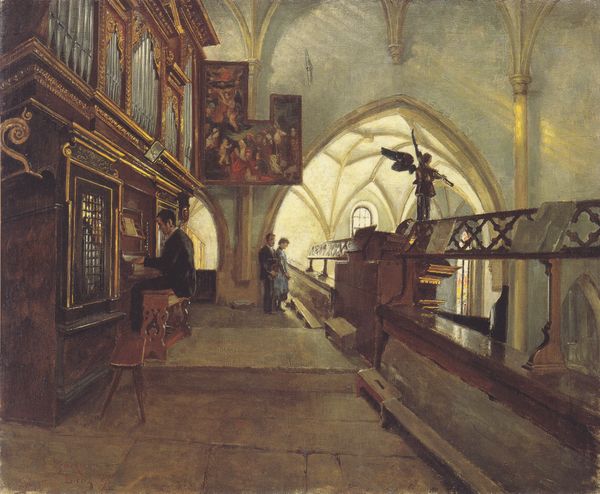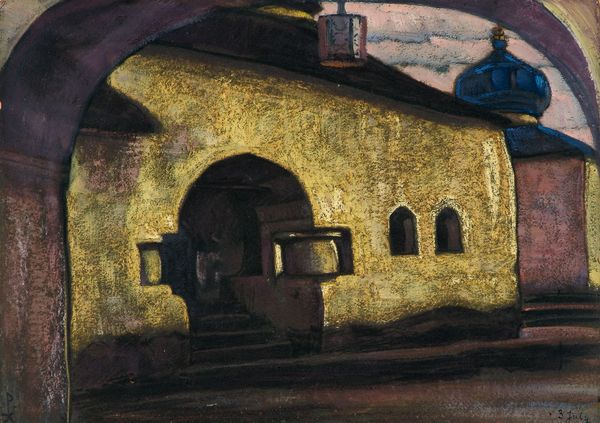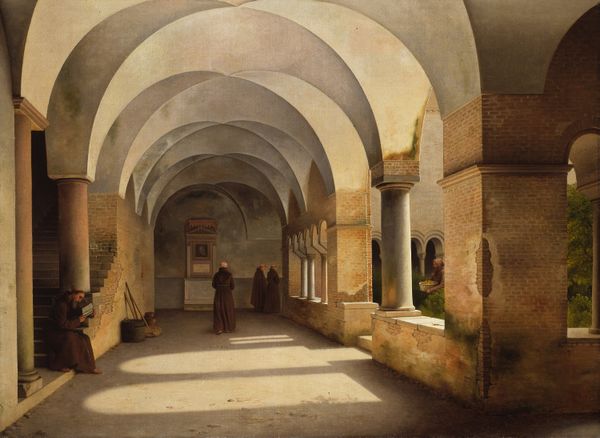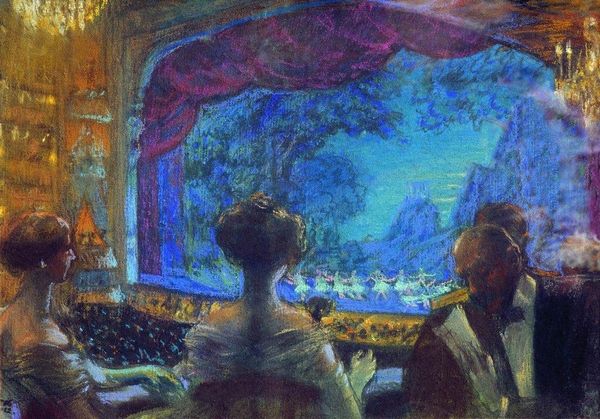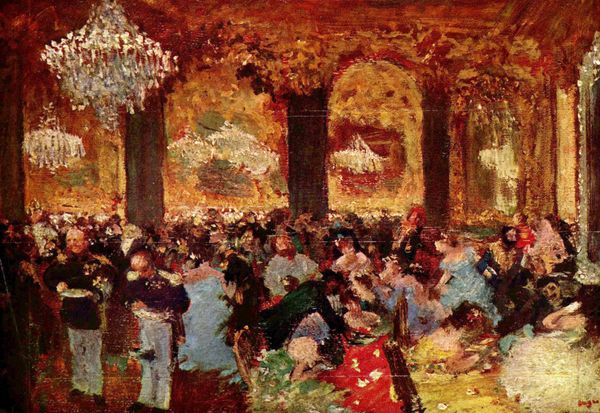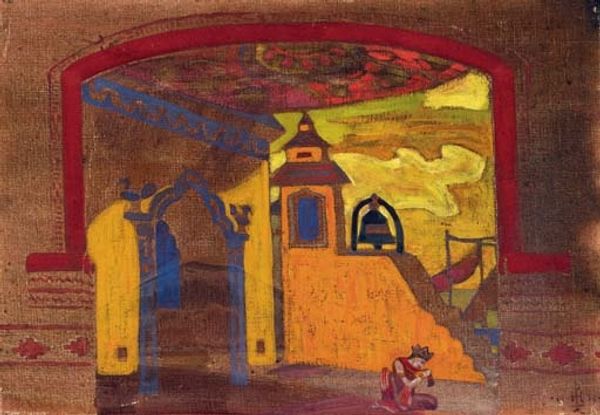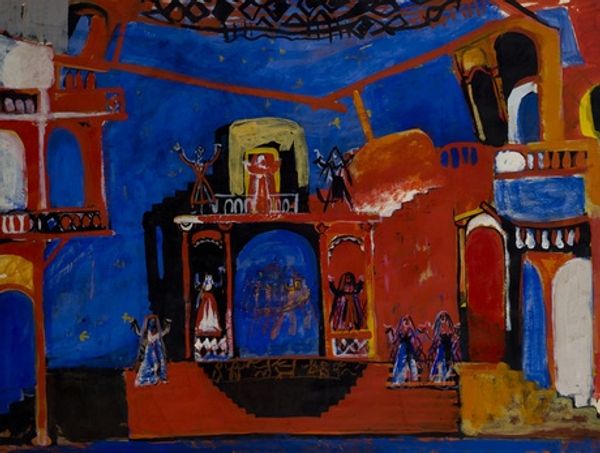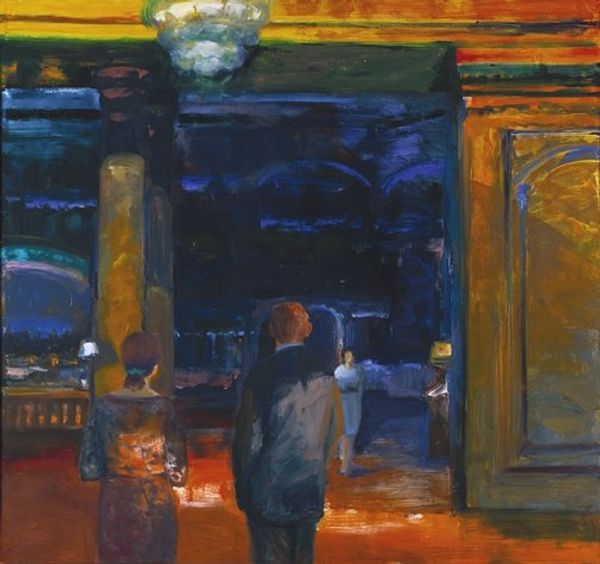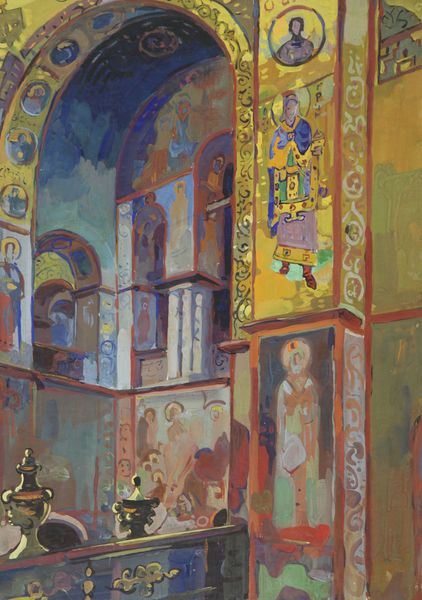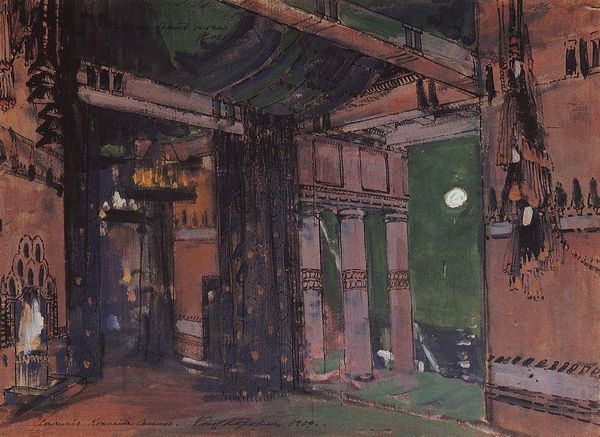
painting, oil-paint
#
narrative-art
#
painting
#
oil-paint
#
oil painting
#
cityscape
#
genre-painting
#
modernism
#
realism
Dimensions: 64.13 x 43.56 cm
Copyright: Edward Hopper,Fair Use
Editor: Here we have Edward Hopper's "Sheridan Theatre," created in 1937 using oil paint. It gives me a sense of both grand architecture and palpable loneliness all at once. What do you see in this piece? Curator: It's a masterful depiction of cultural memory embedded within a specific space. Look at the way the architecture dominates the composition, its curves and shadows hinting at the opulent past of theatre as a communal experience. Editor: I see that, especially with the repetition of those glowing lamps. Curator: Exactly! Those lamps, like ancient hearths, are vestiges of shared stories and emotions, though their muted glow suggests a fading significance. Consider also the lone figure – her posture, almost yearning. Is she drawn to the stage, to the narrative promised within, or is she detached, observing from a distance? The symbol of "the stage" suggests ritual and shared experience, doesn’t it? Editor: Yes, but she also seems isolated, almost trapped by the railing. It is as if she is set apart, watching, but not engaging with that promised story. Curator: Precisely! Hopper often used architectural elements to frame and isolate his figures, symbolizing a disconnect within modernity. The Sheridan Theatre, in that respect, becomes a container for unspoken narratives, a stage for psychological dramas. How does the lighting, stark and almost artificial, contribute to this reading? Editor: The strong contrast adds to that sense of isolation and distance, like the stage and its stories are something untouchable and distant. It's almost like a ghost of former spectacle. I hadn't considered how the architecture reinforces the emotional message so intensely! Curator: Indeed, the theatre transforms into a potent symbol – a vessel of shared experience now holding individual, perhaps alienated, observers.
Comments
No comments
Be the first to comment and join the conversation on the ultimate creative platform.
